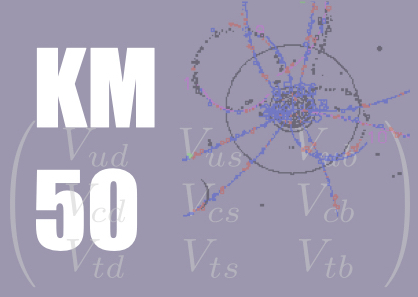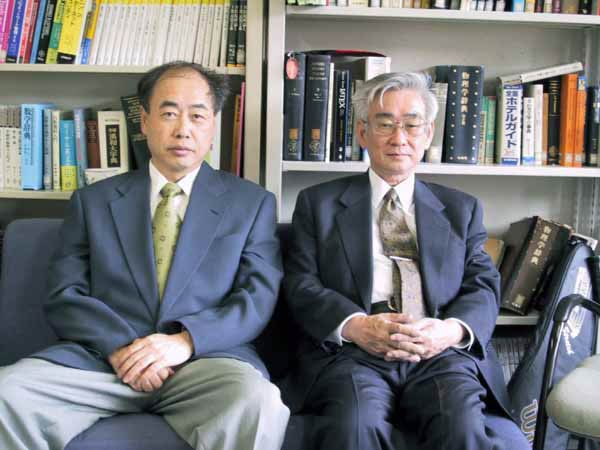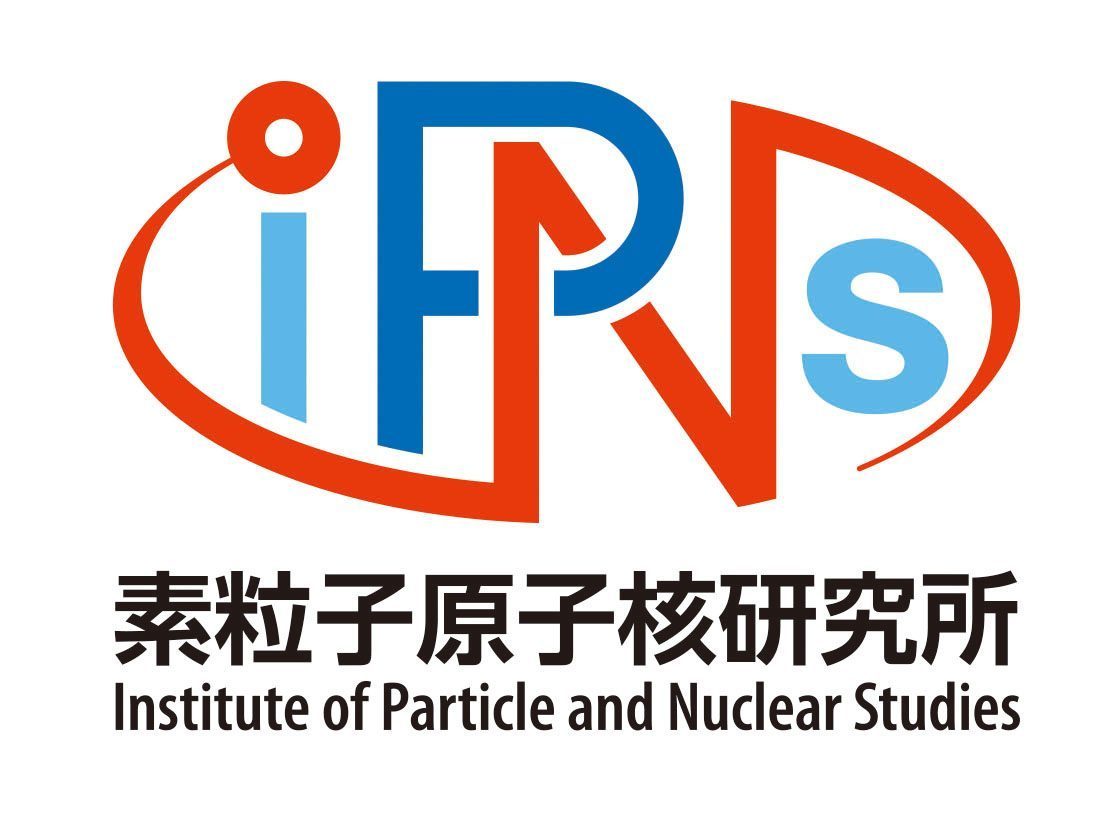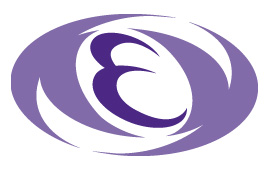Header

Accomplishments and mysteries in quark flavor physics
~ 50th Anniversary of Kobayashi-Maskawa Theory
The Kobayashi-Maskawa theory, the theory that explains the mechanism of CP violation in the elementary particle physics, was published on February 1st, 1973, and the year 2023 marks its 50th anniversary. On February 11th, 2023, KEK, together with KMI of Nagoya University, organizes a symposium "Accomplishments and mysteries in quark flavor physics ~ 50th Anniversary of Kobayashi-Maskawa Theory (KM 50)" to celebrate the magnificent theoretical idea and experimental discoveries, which verified the theory with ever improving precision in the last 50 years. The symposium consists of scientific talks by theorists and experimentalists to describe the accomplishments in the past years and remaining mysteries to be addressed in the future. We coordially invite colleagues to join us at this memorial moment.
Preceeding the symposium, there is also an associated workshop "KEK Flavor Factories 2023 (KEK-FF 2023)" on February 9th and 10th, 2023, which focuses more on the detailed discussions on the current status of the field. Participants are encouraged to join this event, too.

| Date | February 9th-10th, 2023 (KEK-FF 2023) February 11th, 2023 (KM 50) |
|---|---|
| Venue | KEK Tsukuba Campus, Kobayashi Hall (Tsukuba, Japan) On-line participation will also be made possible, though not encouraged. |
Event is over
Scientific program is posted on the indico page. Talk slides are also collected there.
Opening address by DG of KEK
I would like to extend a hearty welcome to all participants to the 50th Anniversary Symposium of Kobayashi-Maskawa Model. I would also like to express my deep respect to the members of the organizing committee who have made tremendous efforts to make this symposium possible. Since the Kobayashi-Maskawa Model was first proposed in February 1973, it has been exactly 50 years since then. In this half a century, three more types of quarks were discovered in addition to the previously known three types, and it came to be thought that the CP non-conservation of quarks might be caused by this model. The fact that the CP problem is directly related to the six types of quarks was clearly proven in the 2000s by the results of the B-factories built in Japan and the US. Through this process, this model has now become part of the common knowledge of particle physics. I think the significance of this symposium is to remind ourselves of the background of the Kobayashi-Maskawa model and how it came to be a part of common knowledge. I was involved in the B factory experiment on the Japanese side, so I would like to talk a little about it from my perspective.
An important turning point for the Kobayashi-Maskawa paper, in addition to the discovery of heavy quarks, was a paper by Carter, Sanda, and Bigi around 1981. Here, according to the Kobayashi-Maskawa model, it was pointed out that the characteristic CP non-conservation should be observed in the time-dependent behavior of the B mesons. Since the lifetime and mixing of B mesons had been measured by earlier experiments, a discussion took place how the points made by Carter, Sanda, Bigi, and others could be experimentally verified, and experiments to make such measurements were proposed around the world. You all know of the B-factory experiments conducted at KEK and SLAC, but there were a number of experimental proposals in the 1980s using electron-positron collision by Cornell University, DESY, and PSI, and experiments using proton beam were BTeV at Fermilab and HERA-B at DESY. All of these experiments were designed to measure time-dependent behavior of B mesons, and I recall with nostalgia the lively discussions that took place at the workshops held around the world at that time.
The key to the B factory experiment at KEK was to achieve high luminosity and asymmetric collisions with electrons and positrons of different energies. The first proposal at KEK was to construct a small positron ring in the middle of the electron-positron collider called TRISTAN, which was in operation at the time, and collide it with electron beam of TRISTAN. However, Hirata and Keil pointed out that this idea would shorten the life of the beam, and it became clear that a major change was needed to match the circumference of the positron and electron rings. In the end, it was decided to proceed with the idea of installing both electron and positron accelerators in the 3-km-long TRISTAN tunnel, and it was realized thanks to the great efforts of then Director Sugawara and other leaders of KEK. By that time, the seven B experimental facilities proposed in the world had been organized, and construction finally proceeded simultaneously at SLAC and KEK.
At that time, I recall that many people criticized us, saying that SLAC, a first class research laboratory, and KEK, a second class laboratory, had no chance to compete with each other. In fact, the KEK accelerator team's ideas were not inferior to SLAC's, such as design of the collision point and the use of the ARES cavity to reduce beam instability. However, it was still very difficult to bring the luminosity up to the design value. One of the things I remember most vividly was the work we all did together to wind coil on the positron ring over a circumference of 3 km to reduce the phenomenon known as electron cloud instability. The effect was tremendous, and we were able to make dramatic progress in luminosity.
The particle spectrometer was built by the Belle collaboration. I think the design concept here was to create something that worked reliably without being too much advanced or high-performance detector. This was in contrast to SLAC's BaBar detector, but I don't think the performance of the instrument compromised the results at all. Rather, I believe that the Belle produced cleaner experiments that were not affected by the background created by the high-current beam.
In 2000, a major international conference called ICHEP was held in Osaka, and BaBar and Belle presented their first results at the same time. In 2008, Professors Kobayashi and Maskawa were awarded the Nobel Prize in Physics, and I was pleased to shake hands with the BaBar representatives who were also invited to the award ceremony. Since then, we have accumulated more data and measured the unitarity triangles with high precision, and it is now certain that quark mixing and CP non-conservation can be understood by the Kobayashi and Maskawa model.
Flavor physics using electron-positron collisions has been taken over by the next generation experiment, Belle II at SuperKEKB. Although we have not yet accumulated enough data to produce full-scale results, we are confident that detailed measurements of B, D, τ, etc., in the future may well reveal the beginnings of new physics. For the time being, I believe that the most important tasks are to increase the luminosity of the accelerator sufficiently and to develop a strategy for the next generation of flavor physics. Of course, how to secure operating expenses in the face of rising electricity costs around the world is also a very important issue. We will do our utmost to find a solution to this problem. I believe that the cooperation among accelerator physicists, experimentalists, theorists, and us will one day lead to great results. I wish you all the best for this symposium. Thank you.
Confirmed speakers
KM 50
- Adrian Bevan (Queen Mary, London)
- Andrzej Buras (TUM)
- Aida El-Khadra (Illinois)
- Gino Isidori (Zurich)
- Patrick Koppenburg (Nikhef)
- Zoltan Ligeti (LBNL)
- Matthias Neubert (Mainz)
- Stephen Olsen (Chung Ang)
- Amarjit Soni (BNL)
- Nanae Taniguchi (KEK)
- Taku Yamanaka (Osaka)
KEK-FF 2023
- Marzia Bordone (CERN)
- Lu Cao (DESY, Belle)
- Bernat Capdevila (UAB Barcelona and Cambridge)
- Claudia Cornella (Mainz)
- Sasha Glazov (DESY, Belle II)
- Wolfgang Gradl (Mainz)
- Gudrun Hiller (TU Dortmund)
- Martin Hoferichter (Bern)
- Thibaud Humair (MPP, Belle II)
- Matthew Kenzie (Warwick)
- Peter Lewis (Bonn, Belle II)
- David Marzocca (INFN)
- Yu Nakazawa (KEK, Belle II)
- Anton Poluektov (Marseille-CPPM)
- Chien Yeah Seng (FRIB, U of Washington)
- Nicola Serra (Zurich)
- Yuki Sue (Nagoya, Belle II)
- Vincenzo Vagnoni (INFN, Bologna)
- GuangJuan Wang (KEK)
- Oliver Witzel (Siegen)
- Qidong Zhou (Nagoya, Belle II)
- Roman Zwicky (Edinburgh)
Registration
Registration fee is 3,000 JPY plus 6,000 JPY (for KEK-FF 2023 reception) and 10,000 JPY (for KM 50 banquet). An invoice will be sent to each participant, according to one's attendance of each event. The registration can be made through the indico page. The registration deadline has passed (December 23, 2022).
We plan to broadcast the event through zoom webinar. The link will be announced later. No recording will be made available.
Travel
The restriction upon entering Japan due to COVID-19 has been lifted (as of October 11, 2022). The visa exemption policy is the same as before COVID. See the page of the Ministry of Foreign Affairs of Japan for more detailed official information.
Convenient airports are Haneda airport and Narita airport. Both can be accessed by trains and buses to Tsukuba Center. The bus service is currently reduced due to the COVID situation.
From the Narita airport, the easiest way for Tsukuba is to use a highway bus. They leave at 9:30, 10:40, 13:00, 16:20, 17:50, 22:30, or 5-10 min later depending on the airport terminal. It takes about one hour for Tsukuba Center. You should purchase a ticket (2,400 JPY) at the bus ticket counter in the arrival hall. The bus stop will be announced there. If the bus schedule does not fit your arrival time, you can also use trains, though more complicated. (You have to change trains at least twice.) For details, please try Japan Transit Planner.
From the Haneda airport, the bus schedule for Tsukuba is quite limited (leaving at 9:20, 12:15, 17:05, 19:05). Don't forget to purchase a ticket at the counter (1,900 JPY). It takes about two hours for Tsukuba Center. Using trains may be more useful. Typically you use Tokyo Monorail to Hamamatsu-cho, then Yamanote-Line (or KeihinTohoku-Line running in parallel) to Akihabara, and then Tsukuba Express to Tsukuba. You can check with Japan Transit Planner. Trains are sufficiently often that you don't really have to check the time. (But be careful about the last train of the day.)
Participants are asked to book their hotels or the KEK dormitory by themselves. Our suggestions for the hotels are Urban Hotel Tsukuba (closest to KEK, 20-30 min walk), Hotel Nikko Tsukuba (at the Tsukuba Center, use the local bus to KEK) or Daiwa Roynet Hotel Tsukuba (at the Tsukuba Center, use the local bus to KEK). The bus schedule can be downloaded from here. Those who want to stay at the KEK dormitory have to make a user registration to KEK first. In case you need a help, please contact the email address shown below.
Organizers
KM 50
Naohito Saito (chair, IPNS, KEK),
Shoji Hashimoto,
Junji Hisano (KMI, Nagoya)
Toru Iijima (KMI, Nagoya)
Mikihiko Nakao,
Mihiko Nojiri,
Tadashi Nomura,
Shoji Uno
(* IPNS, KEK if not specified)
KEK-FF 2023 Advisory Board
Aida El-Khadra (Illinois), Emi Kou (IJClab), Thomas Mannel (Siegen), Diego Tonelli (Trieste)
KEK-FF 2023 Organizers
Motoi Endo,
Shoji Hashimoto (chair),
Akimasa Ishikawa,
Takashi Kaneko,
Teppei Kitahara (KMI, Nagoya)
Shohei Nishida
(* IPNS, KEK if not specified)
Host institutes
The symposium is co-hosted by Institute of Particle and Nuclear Studies (IPNS), High Energy Accelerator Research Organization (KEK) and Kobayashi-Maskawa Institute for the Origin of Particles and the Universe (KMI), Nagoya University.
Contact
All inquiries can be directed to kekff-loc@ml.post.kek.jp.


